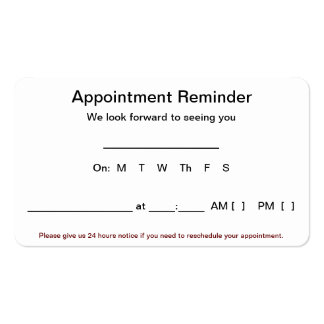In 2005, I was invited to speak at a global sales conference. I don’t often get the opportunity to do last-minute gigs, but that is exactly what this was. An executive I was mentoring at the time had apparently been speaking with someone they knew at this company and found out that their speaker had bailed. My client recommended me.
The gig was going to be taking place at the end of the week, and I had a rather unusual opening in my schedule. There seemed to be a synchronicity that made it work, so when the call came, I took the opportunity. Because I didn’t have my usual prep time, I only knew the most basic of information about this company and that it was a global sales conference.
Arriving at the venue that morning, I have to tell you, I was expecting a considerably larger group. But no matter. I was introduced to the global sales team leaders, who each ran their own division in different countries. I was also introduced to the CEO, a man by the name of Graham Kill. Graham clearly had the poise of a leader, while at the same time the people around him seemed to have an obvious respect for who he was as an individual. Graham seemed both grounded and approachable, and I took an instant liking to him.
As I finished my presentation, Graham approached me and thanked me; then he asked if I would like to join the team for dinner that night. I was honored, and I replied that I would. Entering the restaurant, I was motioned by Graham to sit next to him. After a day of team-building exercises, my morning presentation, and the first sips of wine, everyone was in a great mood, making for a dinner that was lots of fun for all. During dinner, Graham and I got to know each other a little better. He and I got into some meaty discussions about a range of subjects including our thoughts about leadership in general and personal leadership styles. I clearly remember a point of real rapport came as we both spoke of how the foundation of great leadership was reliant upon self-knowledge and the necessity to lead one’s self.
Graham, being a true leader, had done some self-inquiry. However, as a quality leader, he understood that there’s always another level of depth. He began to inquire about the strategies and processes I offered. We spoke about how I could come in and work with his C-suite executives, and how I have worked with companies who were discovering the power of Vulnerable Leadership in generating Fierce Loyalty in their own teams.
Even though he can be very playful, Graham is the CEO of a multi-national organization. As such, he’s a fairly cool, calm, and collected kind of guy, with a James Bond-esque demeanor. In his calm but nonetheless warm manner, he began to inquire whether I did this kind of work one-on-one or only with teams. I shared with him that I have an exclusive and extremely intensive process where I work one-on-one with a leader. This process is called The Personal Excellence Architecture for Leaders. It requires that individual to be with me exclusively, without interruption of any kind, for up to twenty-four hours straight. The process demands a level of open vulnerability that most people, let alone leaders, are unfamiliar with. Following that initial process, there is a further six months of mentoring and coaching for integration.
As you can imagine, that level of intensity alone is enough to sort out those who are genuinely committed from those who are merely interested. It clearly shows which true leaders are all about action and which are just interested—“the tire kickers” who will have a myriad of reasons why they can’t do it. Within a week, I received a call from Graham saying, “Let’s do this thing.” Within a month, we had set up to meet on neutral ground on his way back from some other destination and go through his PEAL (Personal Excellence Architecture for Leaders).
I, of course, won’t go into the specifics of the process, and I can’t share what Graham discovered. However, what I can tell you is that Graham became both deeply aware and extremely mindful of the beliefs and thought processes he had been having and the behaviors he had been doing that were either limiting or expanding him: the things that were either creating distance and disengagement or connection and engagement with others. And now he had the tools to focus on and use to move toward the latter.
The following summer, Graham brought us to Europe to work with his executive leadership team, who were flown in from their different countries. This would be my opportunity to see the true level of integration Graham had applied around those he was leading. In the lead-up months before, Graham and I had discussed the outcomes he was looking for. Right at the top of the list was something so many leaders in his position face challenges with: silos.
As a company grows, it’s natural to go from everyone wearing multiple hats and communicating about everything, to the development of departments and teams. As exciting as this can be, one of the most common challenges is that internal departments become adversarial, in essence building silos around themselves. As a result, departments stop communicating with each other. Graham had made it crystal clear that he wanted me to find a way to pull the silos down and open up fluid communication between departments and the leaders that ran them.
As we set up that morning, Graham and I took some time to sit and catch up. He asked me, “What can I do to assist so that this training will have the best possible outcome?” My answer was short and to the point: Leaders go first! So when asked to be vulnerable and open up, leaders go first and lead by example.
Without hesitatio
n, Graham agreed to do so, and then did it. In doing so, he assisted me in creating the safety needed for his executive team to embrace the power of vulnerable leadership. People began opening up about the challenges they faced with their teams, with each other, and most importantly, with themselves. However, it should be noted that this was not about finger-pointing at others or even self-berating. This was about vulnerability and sincere accountability.
So when a team member was struggling with another team member’s way of being or leadership style, instead of making the other person wrong, the first person voiced it as their own challenge, a challenge that they themselves were responsible for resolving.
At the end of the five-day retreat, not only were the silos down, but each person felt they genuinely knew the other members of the team. And it went further. Certain members of the team who had simply resigned themselves to the idea they would never get along with another particular team member found themselves connecting so deeply with that person that they felt like this was someone they trusted, respected, and even considered a friend.
Caring, Compassion and Vulnerability
As I said earlier, the capacity for genuine caring, compassion, and vulnerability will define the leaders of tomorrow. As much as one of the major roles of a leader is to inspire and motivate people, that inspiration will wear off faster than a fake tan in a bubble bath if the leader hasn’t had the courage to go through—and continue to go through—a process of self-inquiry. In other words, they must be willing to look under their own hoods. By virtue of that, it was Graham’s willingness to get comfortable being uncomfortable as leader and step forward into the power of vulnerability with me, and then his team, that made the training we did a raving success, every bit as much as my leadership of the group. Why? Because genuine courage is contagious.
Key Point To Remember In Training Others:
- Great leaders go first. They bypass “interested” and go straight to “committed.”
- Vulnerability and accountability are best friends
- Get comfortable being uncomfortable
- Self-knowledge is the cornerstone of emotionally intelligent leadership
- Commit to becoming brilliant at working out why you are actually upset about any given situation. (Alternatively, get help in learning how to do so.)
- Emotionally intelligent leaders don’t play the blame game, nor do they let rambling, negative self-talk take control of their minds.
- Make finding your drivers, motives, and moods an adventure.
- Courage is not only inspiring, it’s contagious.

























 The cost of customer acquisition (CAC) means the price you pay to acquire a new customer. In its simplest form, it can be worked out by:
The cost of customer acquisition (CAC) means the price you pay to acquire a new customer. In its simplest form, it can be worked out by:














